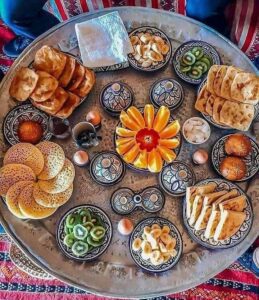Moroccan Clay and Copper Cookware: A Culinary Journey Through Tradition and Craftsmanship
The Artisan’s Legacy: More Than Just Cooking Vessels


In the heart of Morocco’s ancient medinas, a culinary tradition unfolds—one where cooking transcends mere preparation and becomes an art form. Moroccan clay and copper cookware represent more than kitchen tools; they are living narratives of cultural heritage, craftsmanship, and gastronomic excellence.
The Historical Roots of Moroccan Cookware
Morocco’s culinary landscape is deeply rooted in centuries-old artisan techniques. The cities of Fez and Marrakech have long been epicenters of traditional metalwork and pottery, where each piece tells a story of generational skill and cultural pride.
The Unique Characteristics of Moroccan Cookware
Clay Tagines: The Crown Jewel of Moroccan Cooking
Unparalleled Design and Functionality
- Conical Shape: Allows steam to circulate, creating perfectly moist dishes
- Natural Clay Composition: Enhances flavor and provides even heat distribution
- Handcrafted Precision: Each tagine is a unique work of art
Copper Vessels: Precision and Tradition


Scientific Advantages of Copper Cookware
- Superior heat conductivity
- Precise temperature control
- Natural antimicrobial properties
Culinary Techniques and Cultural Significance
Traditional Cooking Methods
- Slow cooking techniques
- Layering of complex spices
- Preservation of nutritional integrity
Iconic Dishes Prepared in Traditional Cookware
- Lamb Tagine with Preserved Lemons
- Fish Tagine with Chermoula
- Vegetable Medleys
- Traditional Moroccan Soups
Health and Wellness Benefits
Why Traditional Cookware Matters
- Zero Chemical Additives
- Minimal Oil Usage
- Nutrient Preservation
- Natural Cooking Surfaces
Artisan Craftsmanship: Beyond Mass Production
The Making of a Moroccan Cookware Piece
- Careful selection of raw materials
- Hand-molding by master craftsmen
- Traditional firing techniques
- Intricate decorative processes
Design Elements
- Geometric patterns
- Vibrant color palettes
- Influences from Berber and Andalusian art
Choosing Authentic Moroccan Cookware
What to Look For


- 100% Handmade Certification
- Origin Verification
- Artisan Signature
- Quality of Glaze and Finish
Care and Maintenance Guide
Preserving Your Moroccan Cookware
- Gentle Cleaning Techniques
- Proper Storage
- Seasoning and Maintenance Tips
Environmental and Ethical Considerations
Supporting Artisan Communities
- Fair Trade Practices
- Sustainable Production
- Preservation of Traditional Skills
Why American Home Cooks Are Falling in Love with Moroccan Cookware
- Unique Culinary Experience
- Instagram-Worthy Presentation
- Connection to Global Culinary Traditions
- Sustainable Kitchen Choices
Conclusion: A Culinary Passport to Morocco
Moroccan clay and copper cookware are not just kitchen tools—they’re culinary ambassadors, bringing the rich, aromatic world of Moroccan cooking directly to your home.
Keywords
Moroccan tagine, traditional copper cookware, Fez pottery, handmade kitchen tools, Moroccan culinary art, artisan cookware
